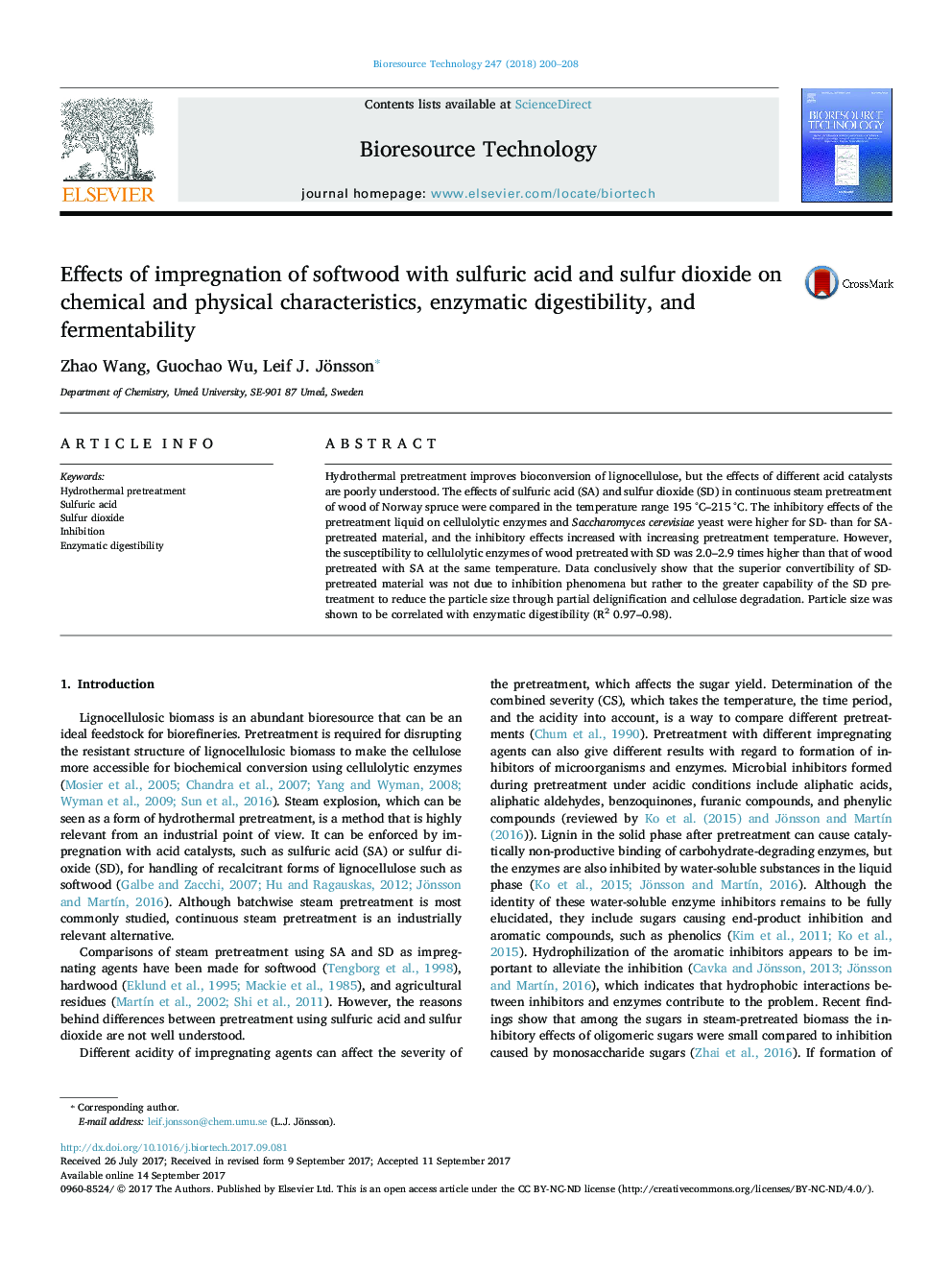| Article ID | Journal | Published Year | Pages | File Type |
|---|---|---|---|---|
| 4996640 | Bioresource Technology | 2018 | 9 Pages |
â¢Steam pretreatment of spruce using H2SO4 and SO2 was compared at 195 °C-215 °C.â¢SO2 and high temperature caused partial degradation of cellulose and lignin.â¢SO2 and high temperature also promoted formation of particles of smaller size.â¢SO2 pretreatment liquid was more inhibitory to enzymic and microbial biocatalysts.â¢SO2 and high temperature resulted in superior enzymatic digestibility of cellulose.
Hydrothermal pretreatment improves bioconversion of lignocellulose, but the effects of different acid catalysts are poorly understood. The effects of sulfuric acid (SA) and sulfur dioxide (SD) in continuous steam pretreatment of wood of Norway spruce were compared in the temperature range 195 °C-215 °C. The inhibitory effects of the pretreatment liquid on cellulolytic enzymes and Saccharomyces cerevisiae yeast were higher for SD- than for SA-pretreated material, and the inhibitory effects increased with increasing pretreatment temperature. However, the susceptibility to cellulolytic enzymes of wood pretreated with SD was 2.0-2.9 times higher than that of wood pretreated with SA at the same temperature. Data conclusively show that the superior convertibility of SD-pretreated material was not due to inhibition phenomena but rather to the greater capability of the SD pretreatment to reduce the particle size through partial delignification and cellulose degradation. Particle size was shown to be correlated with enzymatic digestibility (R2 0.97-0.98).
